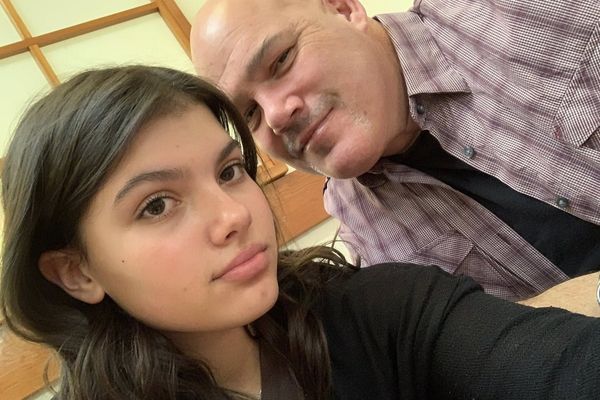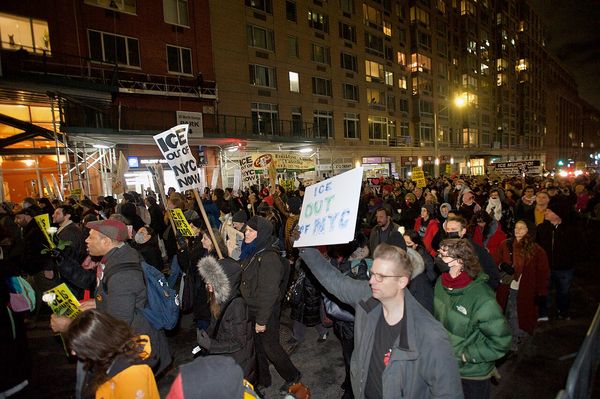Visual kinetic artist Robert Andrew knew from childhood that he had Aboriginal ancestry, but it wasn't until he began to explore history through art that he found his voice.
Within Andrew's family it was well understood that they had Yawuru descendants, but figuring out what that meant took decades.
"When I was 13 my grandmother showed my sister and myself a picture of someone she called Mimi, which meant her mother's mother," he said.
"That was sort of when I found out that I had Aboriginal heritage, but I didn't quite understand what that meant."
Andrew grew up in suburban Perth and said his experiences and education didn't tell him anything about urban Aboriginal people.
"From my schooling, what I was taught was that an Aboriginal person lived out in the bush and had a completely different way of life [to me]," he said.
It was not until decades later, inspired by his sister's research, that he began to explore his Indigeneity, and enrolled in a contemporary Australian Indigenous art course in 2008 in Brisbane.
"Initially it was to learn more about family, like my sister did, and keep exploring and researching family and that history.
"It was quite shocking to understand that what we were taught [at school] was only a very small subset of the whole history of colonisation and pre-colonisation.
"I discovered that making art and talking about these stories went really well hand in hand and it gave me a voice that I couldn't have had any other way because I'm not very good at explaining things verbally."
In his two works for his exhibition 'Held within a word' at Perth Institute of Contemporary Art (PICA), Andrew challenges the use of the English language in telling a colonisers narrative and uses large-scale, moving installations to tell stories in a different way.
In 'Tracing inscriptions — Moondang dandjoo koorliny', charred rocks and branches collected around the Toodyay area with Whadjuk traditional owner Elisha Jacobs-Smith are suspended across two huge walls at the gallery.
The 150 burnt branches and rocks are suspended from fishing line which connects to a machine at the end of the room.
Mr Jacobs-Smith has written some Noongar words and those words are traced using a mechanical plotter, with the movement transferred through the strings, to the rocks and branches on the wall.
"The machine slowly moves as it traces around the language, and this will initially make heavy marks, and then they'll have softened marks and make their own images, and the sticks will jump and hit each other occasionally," Andrew said.
"There is this quiet environment, it's quite nice, because you get 150 charcoal branches and rocks rubbing against the walls, it's like whispering.
"You can almost walk past this work, and I've seen people do it, and not recognise the movement until you stop and understand that they're all moving.
"It brings you into a different time, it slows you down to watch those movements and to understand what's happening."
The second artwork stands in the middle of the room, with water dripping from the high gallery ceiling onto a low platform below.
Titled 'Moving beyond the line', water drips onto the open pages of Australia's Coloured Minority: Its Place in the Community, published in 1947 by A.O. Neville, WA's Chief Proctor of the Aborigines and a key proponent of child removal policies.
Red ochre has been placed between the pages and as the water drips through, Neville's words are slowly obscured by the pigment, making a point about the survival and resilience of Indigenous people.
For Andrew, who says he finds the English language difficult at time, his artwork is "hopefully showing the complexity of language, and also ideas around the colonisation process and the use of the English language as a tool to colonise and remove our culture's language."
Bringing his work back to his hometown for the Perth Festival (he now lives in Brisbane) is "really important".
"To bring these works home, because I still call Perth home, is really important," he said.
"I've had those dialogues with family members around the work that's here, but a lot of family haven't seen the work, they've only seen images of the work and it's really hard to explain this work to people.
"So it's really nice that mum and dad will see it and a lot of cousins and rellies will be seeing it as well."







